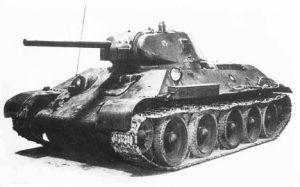While some may be nostalgic for the relative simplicity of the Cold War, we should not forget what the stakes were then and how close the world was to catastrophe.–Ed.
by J. Edgar Williams
For six years, 1955-60 inclusive, I was stationed first at the U. S. Embassy in London and then at the Embassy at Madrid. As an Army Active Reserve Officer, I went each year to a different Army base in Germany for my two weeks of annual active duty training. In 1958, we were seeing indications from intelligence sources of a Soviet army build-up in their occupied East Germany, which indicated a possible intention to invade West Germany. However, time passed with continuing build-up but no clear evidence of intent to invade.
In the early summer of 1960, I was transferred from Madrid to Washington, and I went to Germany for my two weeks training just before traveling back to the U. S. I spent those two weeks with a field artillery battalion at our base at Baumholder, in Rheinland-Pfalz, west of the Rhine River, between Trier and Kaiserslautern. Our weapons were self-propelled 155mm cannons, with long tubes (barrels), which we called “guns” to distinguish them from the short-tube howitzers. In addition to the normal kinds of high-explosive ammunition, we had a stock of nuclear projectiles.

There was a lot of apprehension about the continuing Soviet build-up in the part of East Germany, which bulged towards the west. This was in Thuringia, between Gotha and Erfurt. Clearly, the best invasion route would be through the Fulda Gap, a gap between two small mountain ranges, leading directly into river valleys down which Soviet armored divisions could move straight towards Frankfurt, Wiesbaden, Mainz, Mannheim, etc. Our base was 100 miles from the Fulda Gap, and our plans were to move there very fast when we first heard of Soviet troops heading for the border. We had planned specific locations where we would set up our guns to blast the Soviet tanks with nuclear shells as they came through the gap. I don’t recall any doubts about our being able to use the nuclear shells, nor any discussion about how high up the order would have to come from. (Things were different then!) At the time, the Soviets were developing inter-continental ballistic missiles, but we understood that they did not have nuclear artillery projectiles.There were, of course, lots of families of U. S. servicemen in Germany. We were briefed on the elaborate plans to get them out safely in the event of a Soviet invasion. Certain bridges across the Rhine and other rivers were set aside for civilian refugee use, while others were reserved for specific army units. After crossing the rivers and the border into France, mostly through Strasbourg, the evacuation plan was to move the civilians down into Spain, from whence they would be evacuated back to the U. S.
Thank God we never had to put those plans into effect. In the early 1960’s, the Thuringia build-up stopped, though there was very little Soviet force-reduction until much later. The Soviets, and their accomplices in the U. S., claimed that the reason for the Soviet build-up was because they feared a U. S. invasion of East Germany. This, of course, was ridiculous propaganda, since it would have been more than obvious to even poorly-trained intelligence agents that the U. S. had neither sufficient forces nor any intention of making an assault across the border which we had allowed the Soviets to draw only 15 years previously. So my two weeks of high-blood-pressure service came to an end without incident, and I went down to the Mercedes-Benz factory at Sindelfingen, picked up the sports-car I had ordered, drove it down to Naples, and boarded a ship bound for New York.![]()

J. Edgar Williams, Secretary of American Diplomacy Publishers and a member of this journal’s editorial advisory board, served for twenty-seven years in the U. S. Foreign Service.
